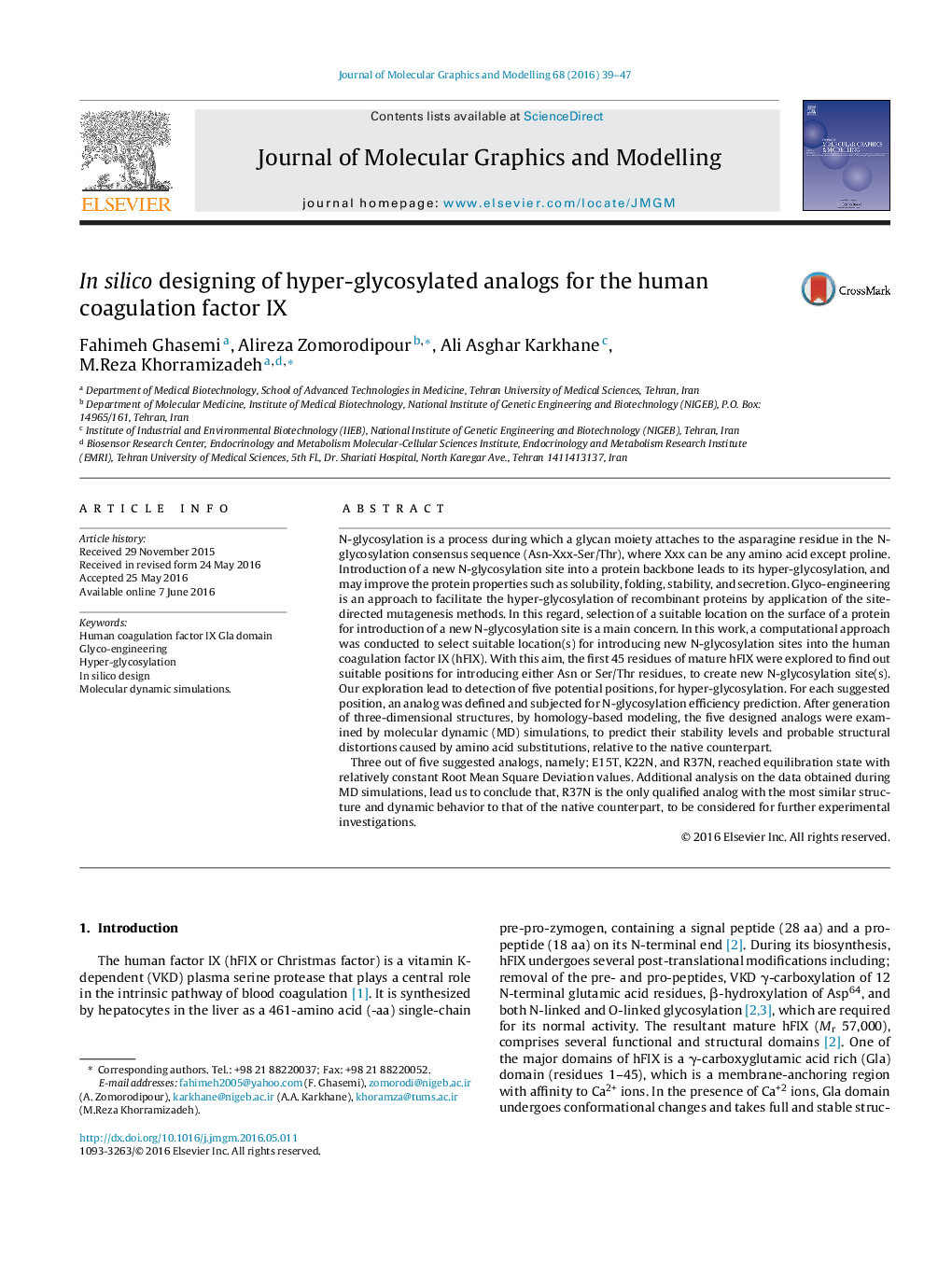| کد مقاله | کد نشریه | سال انتشار | مقاله انگلیسی | نسخه تمام متن |
|---|---|---|---|---|
| 443217 | 692690 | 2016 | 9 صفحه PDF | دانلود رایگان |
• Five N-glycosylation analogs were designed for hFIX Gla domain.
• The designed analogs were subjected for molecular dynamic (MD) simulations.
• Analogs E15T, K22N, and R37N, reached equilibration state.
• Among the examined analogs, R37 N showed same dynamic behavior as the native.
• R37 N was suggested as the final qualified analog for hyper-glycosylation of hFIX.
N-glycosylation is a process during which a glycan moiety attaches to the asparagine residue in the N-glycosylation consensus sequence (Asn-Xxx-Ser/Thr), where Xxx can be any amino acid except proline. Introduction of a new N-glycosylation site into a protein backbone leads to its hyper-glycosylation, and may improve the protein properties such as solubility, folding, stability, and secretion. Glyco-engineering is an approach to facilitate the hyper-glycosylation of recombinant proteins by application of the site-directed mutagenesis methods. In this regard, selection of a suitable location on the surface of a protein for introduction of a new N-glycosylation site is a main concern. In this work, a computational approach was conducted to select suitable location(s) for introducing new N-glycosylation sites into the human coagulation factor IX (hFIX). With this aim, the first 45 residues of mature hFIX were explored to find out suitable positions for introducing either Asn or Ser/Thr residues, to create new N-glycosylation site(s). Our exploration lead to detection of five potential positions, for hyper-glycosylation. For each suggested position, an analog was defined and subjected for N-glycosylation efficiency prediction. After generation of three-dimensional structures, by homology-based modeling, the five designed analogs were examined by molecular dynamic (MD) simulations, to predict their stability levels and probable structural distortions caused by amino acid substitutions, relative to the native counterpart.Three out of five suggested analogs, namely; E15T, K22N, and R37N, reached equilibration state with relatively constant Root Mean Square Deviation values. Additional analysis on the data obtained during MD simulations, lead us to conclude that, R37N is the only qualified analog with the most similar structure and dynamic behavior to that of the native counterpart, to be considered for further experimental investigations.
Figure optionsDownload high-quality image (192 K)Download as PowerPoint slide
Journal: Journal of Molecular Graphics and Modelling - Volume 68, July 2016, Pages 39–47
